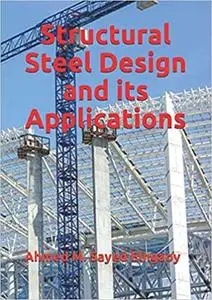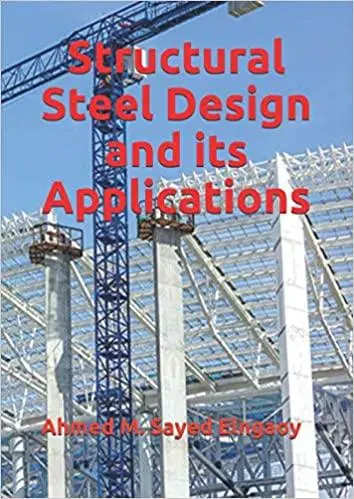Structural Steel Design and its Applications by Independently published
English | September 8, 2020 | ISBN: N/A | ASIN: B08HQ139FK | 286 pages | PDF | 15 Mb
English | September 8, 2020 | ISBN: N/A | ASIN: B08HQ139FK | 286 pages | PDF | 15 Mb
Steel construction applications are the second most important type of constructions after concrete structures. Also, it finds that some constructions are not suitable to be concrete structure and they must be steel structure due to some reasons including large spans, very height and special uses such as conveying fluids or because of the fast construction. The use of steel in engineering structure, especially in building, bridges, and industry has made it necessary to present a condensed knowledge about the different aspects involved in the design procedure of such structures.The Saudi building code structural requirements for loads and forces (SBC 301) and steel structures requirements (SBC 306) were developed based on the standards of the American society of civil engineers (SEI/ASCE). It finds that these available codes can have some difficulties in understanding for some engineers and also, they lack examples that explain how to use the design code equations.This handbook of steel design has covered a wide area of steel structures. Extensive examples have been given to facilitate the easy use of the hand-book. This hand-book represents lectures given by the author for undergraduate and postgraduate students at the civil engineering department of Assiut University, Egypt, and Majmaah University, KSA. And also, some of the research carried out by the author in this field. Reference has been made to different codes of practice such as the American (ASIC, ACI, AISI, ASCE, RCSC, and ASTM), the European (CEN), the Canada (CSA and NRCC), the Saudi Arabia (SBC 301, 302, 304, and 306), and the Egyptian (ECP 2001) dealing with different aspects of design.The hand-book contains ten chapters dealing with the different aspects of steel design. The first CHAPTER deals with a general introduction to the use of steel as a structural material, and some of its applications and advantages and disadvantages of steel structures, while the second CHAPTER deals with the loads which should be considered when designing a structure. Also, illustrated examples of the calculation of loads are presented. The third CHAPTER deals with the design of axial tension members and their allowable stresses, while the fourth CHAPTER deals with the design of axial compression members and their allowable stresses. Effective buckling lengths of different types of members and columns are presented. Tables and charts for calculating the effective buckling length are given for ready use by design engineers. Also, illustrated examples are presented.CHAPTER five deals with the design of beams for flexure and shear stresses. Most problems encountered in the design of beams are discussed. Practical design procedures are given using American and Egyptian specifications. Also, illustrated examples are presented. CHAPTER six deals with the design of members for combined forces and torsion, while the seventh CHAPTER deals with the design of crane beams and crane columns. In this chapter, it is applied to chapter six. Also, illustrated examples are presented.CHAPTER eight deals with the welded and bolted connections. Examples are given to show the procedure of the design of different types of connections using welded and bolted. Moreover, American and Egyptian specifications related to different aspects of welding and bolted design are given. Applications of different specifications are illustrated by different examples. CHAPTER nine deals with the design of column bases. All types of column bases are included in this chapter. CHAPTER ten deals with the roof trusses. Numerous applications of the project example are presented to illustrate the use of these charts and tables.Finally, it is hoped that by presenting this hand-book, it will fulfill the great need for a unified handbook for practical and design engineers.
Feel Free to contact me for book requests, informations or feedbacks.
Without You And Your Support We Can’t Continue
Thanks For Buying Premium From My Links For Support
Without You And Your Support We Can’t Continue
Thanks For Buying Premium From My Links For Support



